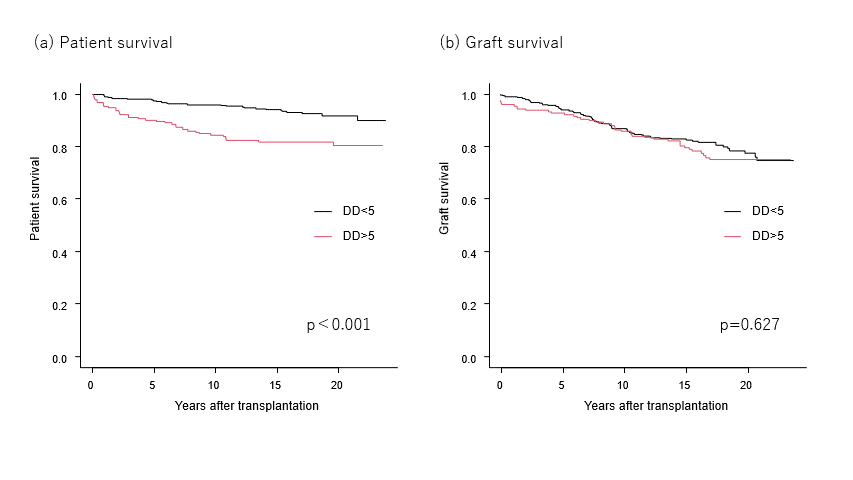Advances in dialysis treatment may improve kidney transplant outcomes
Yoichi Kakuta1, Soichi Matsumura1, Shota Fukae1, Ryo Tanaka1, Hiroaki Yonishi2, Shigeaki Nakazawa1, Kazuaki Yamanaka1, Yoshitaka Isaka2, Norio Nonomura1.
1Urology, Osaka University Graduate School of Medicine, Suita, Osaka, Japan; 2Nephrology, Osaka University Graduate School of Medicine, Suita, Osaka, Japan
Introduction: Longer period of dialysis prior to kidney transplantation generally results in poorer post-transplant outcomes. However, recently, the environment surrounding dialysis treatment has changed dramatically with advances in drug therapy, dietary management, and exercise therapy and so on. In this study, we examined the impact of advances in dialysis treatment on the prognosis of renal transplantation.
Methods: We included 965 renal transplant cases performed at the Osaka University Renal Transplant Group since 2000. Patients were divided into two groups: those who underwent renal transplantation before 2010 (DDb2010, n=470) and those who underwent renal transplantation after 2010 (DDa2010, n=495). Furthermore, each group divided into two groups: those who were on dialysis for less than 5 years (<5 years) and more than 5 years (>5 years). We also performed a propensity score matching of each group.
Results: The 5- and 10-year patient survival rates for DDb2010<5 and DDb2010>5 was 97.2% and 95.5%, 89.6% and 83.5%, respectively, with significantly higher in the DDb2010<5 group (p<0.001). There was no significant difference in death-censored graft survival rates between the two groups (p=0.764). After matching for patient background, survival was still significantly higher in the DDb2010<5 group (p=0.03). Factors affecting patient survival in univariate and multivariate analysis included recipient age, malignancy, and duration of dialysis prior to transplantation. The 5- and 10-year patient survival rates for the DDa2010<5 and DDa2010>5 groups were 97.2%, 94.5% and 95.4%, 89 .8%, and similarly, the DDa2010<5 group had significantly higher survival rates (p=0.02). However, there was no significant difference between the two groups after matching (p=0.461). Death-censored graft survival rates were not significantly different between the two groups both before and after matching. Duration of dialysis was not the factor to affect patient survival in multivariate analysis. The incidence of cardiovascular and other events after transplantation tended to be lower in the DDa2010 group than in the DDb2010 group.
Conclusion: Shorter duration of dialysis prior to kidney transplantation is preferable. However, advances in dialysis treatment may have reduced the impact of dialysis duration on outcomes after kidney transplantation.

